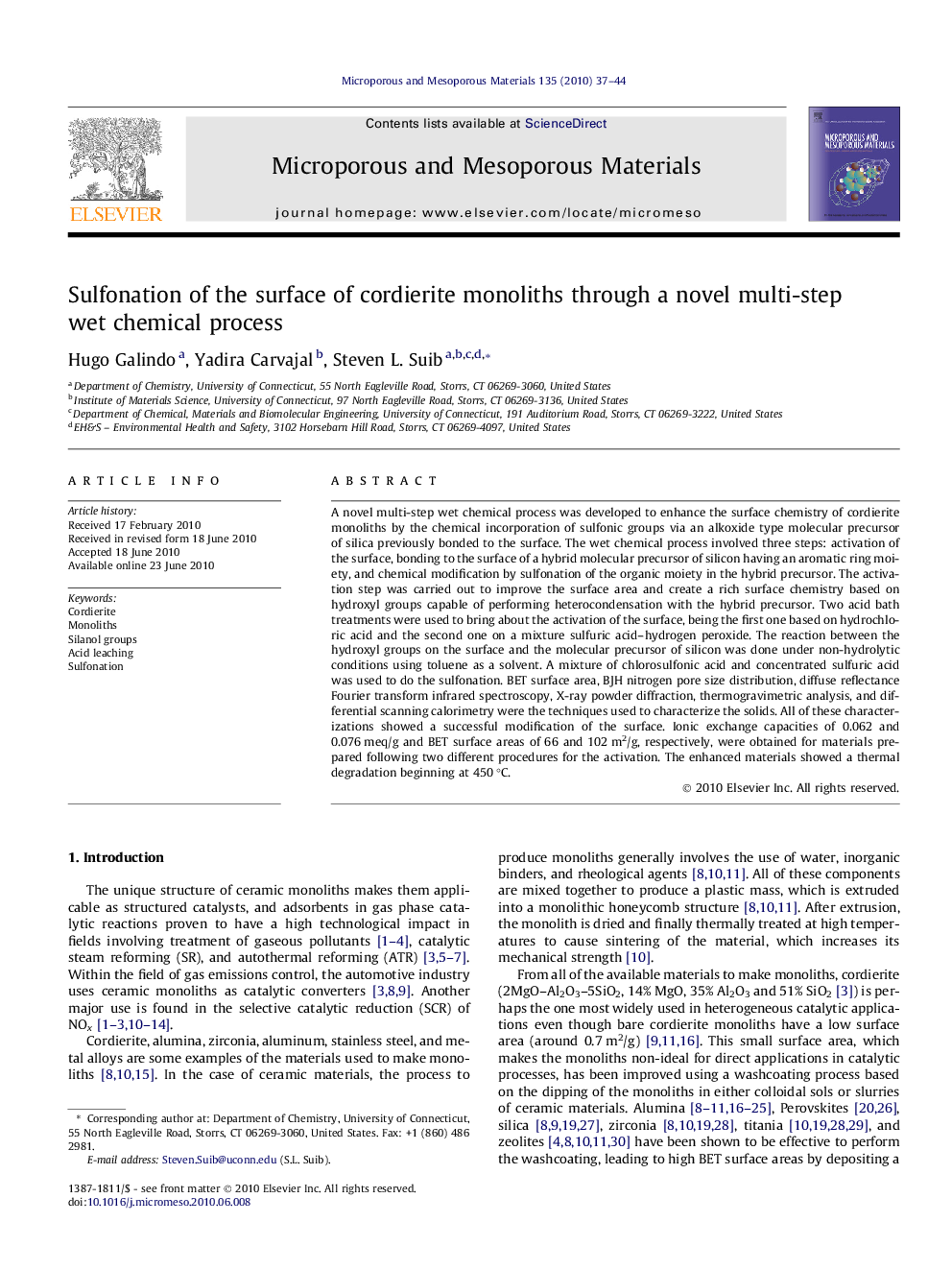| Article ID | Journal | Published Year | Pages | File Type |
|---|---|---|---|---|
| 74672 | Microporous and Mesoporous Materials | 2010 | 8 Pages |
A novel multi-step wet chemical process was developed to enhance the surface chemistry of cordierite monoliths by the chemical incorporation of sulfonic groups via an alkoxide type molecular precursor of silica previously bonded to the surface. The wet chemical process involved three steps: activation of the surface, bonding to the surface of a hybrid molecular precursor of silicon having an aromatic ring moiety, and chemical modification by sulfonation of the organic moiety in the hybrid precursor. The activation step was carried out to improve the surface area and create a rich surface chemistry based on hydroxyl groups capable of performing heterocondensation with the hybrid precursor. Two acid bath treatments were used to bring about the activation of the surface, being the first one based on hydrochloric acid and the second one on a mixture sulfuric acid–hydrogen peroxide. The reaction between the hydroxyl groups on the surface and the molecular precursor of silicon was done under non-hydrolytic conditions using toluene as a solvent. A mixture of chlorosulfonic acid and concentrated sulfuric acid was used to do the sulfonation. BET surface area, BJH nitrogen pore size distribution, diffuse reflectance Fourier transform infrared spectroscopy, X-ray powder diffraction, thermogravimetric analysis, and differential scanning calorimetry were the techniques used to characterize the solids. All of these characterizations showed a successful modification of the surface. Ionic exchange capacities of 0.062 and 0.076 meq/g and BET surface areas of 66 and 102 m2/g, respectively, were obtained for materials prepared following two different procedures for the activation. The enhanced materials showed a thermal degradation beginning at 450 °C.
